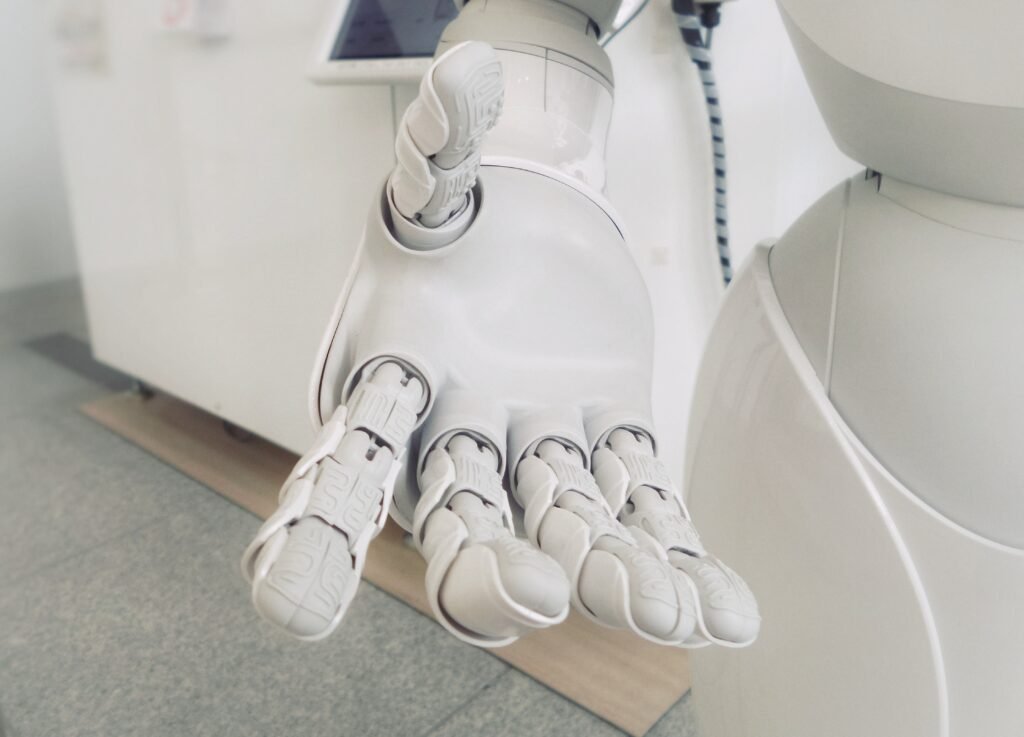In today’s digital age, AI chatbot builders have revolutionized the way we interact with technology. These intelligent algorithms have the remarkable ability to adapt and respond to specific user personas and preferences, making our online conversations feel more personalized and engaging. By analyzing vast amounts of data and utilizing machine learning techniques, these chatbot builders can understand our unique characteristics, anticipate our needs, and tailor their responses accordingly. Whether it’s recommending the perfect playlist or providing expert advice, AI chatbot builders have become our trusted companions in navigating the virtual world.

Understanding User Personas and Preferences
Defining user personas
User personas refer to the fictional representations of the target audience that AI Chatbot builders create to understand and cater to their needs. These personas are developed based on demographic information, behavior patterns, goals, and motivations of the users. By defining user personas, chatbot builders can have a clear understanding of who they are designing the chatbot for and what their expectations and preferences might be.
Identifying user preferences
User preferences are the specific choices and inclinations that individuals have when it comes to interacting with chatbots. These preferences can include factors such as preferred language, communication style, response time, and interaction channels. Recognizing and understanding these preferences is crucial for chatbot builders to ensure that the chatbot delivers a personalized and satisfactory user experience.
Importance of understanding user personas and preferences
Understanding user personas and preferences is essential for AI chatbot builders to develop effective and user-centric chatbot solutions. By gaining insights into the target audience’s characteristics, motivations, and preferences, chatbot builders can tailor the chatbot’s functionalities, responses, and overall design to meet their specific needs. This understanding leads to improved user engagement, customer satisfaction, and ultimately, the success of the chatbot implementation.
AI Chatbot Technologies
Introduction to AI chatbots
AI chatbots are computer programs that utilize artificial intelligence technologies to simulate human-like conversations with users. These chatbots are designed to understand natural language inputs, interpret user intent, and provide relevant and accurate responses. AI chatbots have gained popularity in various industries, including customer service, e-commerce, and healthcare, due to their ability to automate interactions with users and provide instant support.
Machine learning algorithms
Machine learning algorithms are an integral part of AI chatbot development. These algorithms enable chatbots to learn from user interactions and improve their performance over time. By analyzing patterns and data, machine learning algorithms can enhance the chatbot’s understanding of user queries, improve response accuracy, and adapt to changes in user preferences.
Natural Language Processing (NLP)
Natural Language Processing (NLP) is a branch of AI that focuses on enabling computers to understand and process human language. NLP plays a critical role in AI chatbots as it allows them to comprehend and interpret user inputs. Through techniques such as entity recognition, sentiment analysis, and language modeling, NLP helps chatbots grasp the meaning behind user queries and generate appropriate responses.
Deep learning in chatbot development
Deep learning is a subset of machine learning that utilizes neural networks to process complex data and make predictions or decisions. In chatbot development, deep learning algorithms can be applied to improve the chatbot’s ability to understand context, determine user intent, and generate natural and contextually appropriate responses. Deep learning models can learn from vast amounts of data, enabling chatbots to provide more personalized and accurate interactions.

Adapting to User Personas
Creating user personas for chatbot adaptation
To adapt to user personas, chatbot builders first need to create detailed user personas based on demographic information, behavior patterns, and preferences. These personas serve as a foundation for understanding the target audience and tailoring the chatbot’s functionalities and responses accordingly. By identifying the traits and goals of different user personas, chatbot builders can ensure that the chatbot meets the unique needs of each persona.
Collecting user data and insights
Collecting user data and insights is crucial for adapting chatbots to user personas. Chatbot builders can gather data through various channels, including user surveys, interviews, and analyzing user interactions with the chatbot. By analyzing this data, builders can gain valuable insights into user behavior, preferences, and pain points, enabling them to make informed decisions about adapting the chatbot to better serve the users’ needs.
Analyzing user behavior patterns
Analyzing user behavior patterns helps chatbot builders identify common trends and patterns in user interactions. By understanding how users engage with the chatbot, which features they prefer, and the problems they encounter, builders can make data-driven decisions to enhance the chatbot’s performance and improve the user experience. This analysis can also help identify areas where the chatbot may need further adaptation to better align with user preferences.
Developing adaptive algorithms
Developing adaptive algorithms allows chatbots to continuously learn and improve based on user interactions. By deploying machine learning techniques, such as reinforcement learning, chatbots can adapt their responses and behaviors based on user feedback. Adaptive algorithms enable chatbots to become more personalized and tailored to specific user personas, resulting in a more engaging and satisfying interaction for users.
Customizing User Preferences
Gathering user preferences
Gathering user preferences involves collecting information on user choices, inclinations, and expectations. This can be done through user surveys, feedback forms, or by analyzing historical user interactions. By understanding user preferences regarding communication style, language, response time, and other factors, chatbot builders can personalize the chatbot’s features and responses accordingly.
Personalization techniques
Personalization techniques involve tailoring the chatbot’s interactions to align with individual user preferences. This can be achieved through methods like using the user’s name, remembering past conversations, or providing personalized recommendations. Personalization creates a more personalized and engaging experience for users, making them feel valued and increasing their satisfaction with the chatbot’s service.
Recommendation systems
Recommendation systems in chatbots help suggest relevant products, services, or information based on user preferences and past behavior. By analyzing data such as purchase history, browsing patterns, and user feedback, chatbots can provide personalized recommendations, improving the user’s overall experience and increasing the likelihood of achieving their desired outcomes.
Tailoring responses based on user preferences
Tailoring responses based on user preferences involves adapting the chatbot’s language, tone, and content to better resonate with individual users. By considering factors such as the user’s communication style, preferred language, and previous interactions, chatbot builders can deliver responses that feel more natural and personalized. This customization enhances user satisfaction and establishes a stronger connection between the user and the chatbot.

Leveraging Contextual Information
Utilizing context in conversations
Utilizing context in conversations involves considering the information provided by the user and the chatbot’s understanding of previous interactions. By leveraging context, chatbots can anticipate user needs, ask clarifying questions, and provide more accurate and relevant responses. Context-aware chatbots create a more seamless and natural conversation experience, increasing user satisfaction and engagement.
Recognizing user intent and context
Recognizing user intent and context is crucial for chatbots to understand the meaning behind user queries accurately. By utilizing Natural Language Understanding (NLU) techniques, chatbots can extract essential information from user inputs and determine the purpose or goal of the conversation. This understanding allows the chatbot to provide more precise and contextually appropriate responses tailored to the user’s needs.
Tracking user interactions
Tracking user interactions enables chatbots to remember and learn from past conversations with users. By retaining information such as user preferences, previous queries, and feedback, chatbots can provide more personalized recommendations and responses. Tracking interactions also helps chatbot builders identify patterns and trends in user behavior, informing future adaptations and improvements.
Applying context-based algorithms
Applying context-based algorithms involves utilizing machine learning techniques to process and analyze the context of user interactions. These algorithms can consider factors such as user intent, sentiment, and past conversations to generate responses that align with the specific context. Context-based algorithms enhance the chatbot’s ability to provide accurate and relevant information, leading to a more valuable user experience.
Training and Fine-tuning Models
Training data preparation
Training data preparation involves collecting and preprocessing data that will be used to train the chatbot’s machine learning models. This data typically includes user interactions, historical chat logs, and labeled examples of desired responses. Proper data preparation, such as cleaning, filtering, and encoding, ensures that the training data is of high quality and representative of user preferences and behavior.
Model selection and training
Model selection and training involve choosing the appropriate machine learning model and training it with the prepared data. Different models, such as recurrent neural networks (RNNs) or transformers, may be suitable for different chatbot functionalities. By training the selected model with relevant data, chatbot builders can fine-tune its ability to understand user inputs and generate appropriate responses.
Fine-tuning for user personas
Fine-tuning models for user personas involves customizing the trained models to adapt to specific user characteristics and preferences. By incorporating user persona data and preferences into the training process, chatbot builders can improve the model’s accuracy and relevancy for different user segments. Fine-tuning enables the chatbot to provide more personalized and tailored responses, enhancing the user experience.
Iterative model improvement
Iterative model improvement recognizes that chatbot development is an ongoing process of learning and refinement. Chatbot builders continuously gather user feedback, analyze user interactions, and update models accordingly to address any shortcomings or adapt to evolving user preferences. Through iterative improvement, chatbots can continuously enhance their performance, accuracy, and user satisfaction.

Real-time User Feedback
Importance of real-time feedback
Real-time user feedback is crucial for chatbot builders to gather immediate insights from users and make prompt adjustments. Feedback allows chatbot builders to identify areas for improvement, uncover potential issues, and receive suggestions directly from the users. Real-time feedback ensures that the chatbot remains up-to-date and aligned with user preferences, enhancing the overall user experience.
User feedback collection methods
User feedback can be collected through various methods, such as feedback forms, surveys, user reviews, or even direct conversations with users. Chatbot builders can also utilize sentiment analysis to understand users’ overall satisfaction and identify areas for improvement. By employing these methods, chatbot builders gain valuable insights into user perceptions and are better positioned to adapt the chatbot to meet user needs.
Analyzing and incorporating feedback
Analyzing and incorporating feedback involves carefully examining user feedback and extracting valuable insights. Chatbot builders can identify common pain points, recurring suggestions, or specific preferences expressed by users. By analyzing this feedback, builders can prioritize and implement necessary adaptations, ensuring that the chatbot is continuously improving and better aligned with user preferences.
Continuous learning and improvement
Continuous learning and improvement are an integral part of chatbot development. By actively seeking user feedback, analyzing user interactions, and incorporating insights into the chatbot’s design and functionalities, builders can ensure ongoing enhancements. Chatbots that embrace continuous learning demonstrate responsiveness to user needs, leading to higher user satisfaction and overall chatbot efficacy.
Multilingual and Multicultural Adaptation
Handling diverse languages and cultures
Handling diverse languages and cultures is essential for chatbots to cater to users from different regions and language backgrounds. AI chatbot builders need to ensure that their chatbots are capable of interacting in multiple languages and understanding the cultural nuances associated with them. Adapting to the linguistic and cultural diversity of users enables the chatbot to foster a more inclusive and user-friendly experience.
Localization and translation
Localization and translation refer to the process of adapting the chatbot to different languages, dialects, and cultural norms. This involves not only translating text but also ensuring that the chatbot’s responses are culturally appropriate and resonate with users from different regions. Localization and translation efforts enable chatbots to effectively communicate and engage with users worldwide.
Cultural sensitivity in chatbot communication
Cultural sensitivity is crucial in chatbot communication to ensure that the chatbot respects and acknowledges cultural values, beliefs, and practices. AI chatbot builders should be mindful of potential cultural biases, stereotypes, or offensive content that may inadvertently be present in the chatbot’s responses. By prioritizing cultural sensitivity, chatbots can foster a more inclusive and respectful interaction with users from diverse cultural backgrounds.
Adapting to regional preferences
Adapting to regional preferences involves tailoring the chatbot’s functionalities, responses, and recommendations to align with the preferences and expectations of users from specific regions. This may include adapting to local slang, incorporating region-specific services or products, or following cultural norms in conversation. By considering regional preferences, chatbots can provide a more personalized and relevant experience to users.

Ethical Considerations
Privacy and data protection
Privacy and data protection are critical ethical considerations in AI chatbot development. Chatbot builders must ensure that user data is collected, stored, and used securely and in compliance with applicable laws and regulations. Respecting user privacy rights and implementing robust security measures helps foster user trust and confidence in the chatbot’s handling of their personal information.
Transparency in chatbot capabilities
Transparency is essential to establish trust and credibility between chatbots and users. AI chatbot builders should be transparent about the chatbot’s limitations, capabilities, and data usage. Clearly communicating how the chatbot operates, what data is collected, and how it is utilized helps users understand and make informed decisions about interacting with the chatbot.
Avoiding biases and discrimination
AI chatbots should be designed to avoid biases and discrimination in their responses and functionalities. Chatbot builders must ensure that the chatbot treats all users fairly and without favoritism based on factors such as race, gender, or socioeconomic background. Eliminating biases and discrimination promotes inclusivity and fairness in the chatbot’s interactions.
Ensuring inclusivity and fairness
Inclusivity and fairness are integral to ethical chatbot development. Chatbot builders should strive to create chatbots that are accessible and usable by individuals of diverse abilities, backgrounds, and circumstances. Incorporating features such as screen-reader compatibility, language options, or alternative input methods enhances the chatbot’s inclusivity and ensures fair access to its services for all users.
Testing and Evaluation
Designing test cases
Designing test cases involves creating scenarios that simulate various user interactions and evaluating the chatbot’s performance. Test cases should cover a range of user intents, preferences, and potential error scenarios. By designing comprehensive and diverse test cases, chatbot builders can assess the chatbot’s accuracy, responsiveness, and adaptability.
User acceptance testing
User acceptance testing involves involving real users in the testing process to evaluate the chatbot’s usability and user experience. User testers can provide valuable feedback on the chatbot’s performance, identify any usability issues, and highlight areas where adaptations may be necessary. User acceptance testing ensures that the chatbot meets user expectations and delivers a satisfactory experience.
Performance evaluation metrics
Performance evaluation metrics help assess various aspects of the chatbot’s effectiveness and efficiency. Metrics such as accuracy, response time, task completion rate, or user satisfaction scores can provide quantitative insights into the chatbot’s performance. By monitoring these metrics, chatbot builders can identify areas for improvement and measure the impact of adaptations made based on user personas and preferences.
Iterative testing and improvement
Chatbot development is an iterative process, and testing is crucial at every stage. By continuously testing and evaluating the chatbot’s performance, chatbot builders can identify areas for improvement and make necessary adaptations. Iterative testing and improvement ensure that the chatbot remains relevant, accurate, and aligned with user personas and preferences even after deployment.
In conclusion, AI chatbot builders adapt to specific user personas and preferences by understanding their characteristics, gathering user data, and analyzing user behavior patterns. They leverage AI technologies such as machine learning and natural language processing to tailor the chatbot’s responses, personalize user interactions, and utilize contextual information. Fine-tuning models, collecting real-time user feedback, and adapting to multilingual and multicultural requirements are also essential considerations. By prioritizing ethical considerations, continuously testing, and refining the chatbot, builders can create AI chatbots that deliver personalized, relevant, and inclusive interactions with users.
